PM Coupler ZNDC — Technical Guide, Specifications, Applications and Maintenance
The PM Coupler ZNDC is a one-way pneumatic quick coupler engineered for safe, leak-minimized disconnection of compressed air, water and oil lines. It integrates an internal automatic shut-off valve and is supplied primarily in chrome‑plated ZnDC (zinc die‑cast), with steel and brass options to suit different environments and duty cycles. Designed for smooth engagement and disengagement, the PM Coupler ZNDC is optimized for compressed-air piping, hose connections for pneumatic tools, and general plant air distribution.
Introduction
Pneumatic couplers are critical components in any compressed air system. They provide the interface between hoses, hand tools, and fixed distribution networks. The PM Coupler ZNDC distinguishes itself by combining a compact form factor, a built‑in automatic open/close valve for safe disconnection, and a corrosion‑resistant finish. This article provides a comprehensive technical overview of the PM Coupler ZNDC, including detailed specifications, materials and build quality analysis, installation and maintenance guidance, comparative evaluations, application examples and practical troubleshooting recommendations. The goal is to equip plant engineers, maintenance technicians, procurement specialists and design engineers with the information required to select, install and maintain the PM Coupler ZNDC in industrial and commercial pneumatic systems.
Technical Overview
The PM Coupler ZNDC is a single‑direction (one‑way) quick coupler that contains an internal automatic shut‑off valve housed inside the coupler body. When a mating plug is inserted, the internal valve opens and allows flow through the coupler. When the plug is disconnected, the valve closes automatically within the coupler, limiting residual flow and preventing the escape of pressurized media from the downstream circuit. This valve arrangement provides improved safety during disconnection and reduces air loss compared with non‑valved couplers.
Key functional attributes:
- One‑way automatic shut‑off valve: Valve inside the coupler closes when plug is removed, preventing downstream discharge.
- Smooth coupling/uncoupling: Precision machined surfaces and spring‑loaded collar for reliable engagement under pressure.
- Multiple material options: Chrome‑plated zinc die‑cast (ZnDC) as standard for cost/performance balance; steel and brass available for high‑strength or corrosion‑resistant installations.
- Wide compatibility: Available in three thread sizes (PM 20: PT 1/4, PM 30: PT 3/8, PM 40: PT 1/2) to match common pneumatic lines and fittings.
- Media flexibility: Suitable for compressed air, water and oil within recommended pressure/temperature limits.
How it works: internal valve and one-way operation
The internal automatic valve is normally spring‑loaded in the closed position. When the mating plug (male half) is pushed into the coupler (female half), a cam or sleeve of the plug depresses the valve stem, compressing the spring and opening a flow path. When the plug is withdrawn, the spring returns the valve to its closed position, sealing the coupler port. The mechanism is designed to minimize the volume of trapped air downstream at disconnection and to prevent contaminants entering the distribution network. Because this design isolates the downstream circuit when disconnected, it is particularly useful in systems where residual pressure would create safety hazards or process issues.
Specifications and Dimensions
The following table summarizes the key technical specifications for the PM Coupler ZNDC family. Values are manufacturer typical ratings and are intended for engineering selection. Verify with the final product datasheet for your specific production lot and material option prior to installation in critical systems.
| Attribute | PM 20 (PT 1/4) | PM 30 (PT 3/8) | PM 40 (PT 1/2) | Notes |
|---|---|---|---|---|
| Thread Type | PT 1/4 (BSPT 1/4) | PT 3/8 (BSPT 3/8) | PT 1/2 (BSPT 1/2) | Parallel or tapered options available on request; PT denotes common Japanese/BSPT taper |
| Rated Working Pressure | 0–150 psi (0–990 kPa; up to 9.9 kgf/cm²) | Do not exceed pressure rating; use pressure regulation upstream | ||
| Operating Temperature | 32–140°F (0–60°C) | Ambient and media temperature limits; extended ranges available with special seals | ||
| Material (Standard) | Chrome‑plated ZnDC (zinc die‑cast) | Optional steel or brass bodies available | ||
| Seal Material (typical) | NBR / Buna‑N (nitrile rubber) | Viton (FKM) or EPDM options for alternate media/temperature | ||
| Nominal Flow (Cv, typical) | 0.20 | 0.45 | 0.90 | Manufacturer typical Cv values for air at rated pressure |
| Inner Bore (nominal) | ~4.0 mm | ~6.5 mm | ~10.0 mm | Approximate internal passage diameter affecting flow |
| Overall Length (approx.) | 40 mm | 50 mm | 62 mm | End to collar, dimension depends on material and option |
| Maximum Outside Diameter (approx.) | 20 mm | 24 mm | 30 mm | Measured at the collar or knurled area |
| Weight (typical) | ~28 g (ZnDC) | ~42 g (ZnDC) | ~78 g (ZnDC) | Brass or steel options will be heavier |
| Typical Plug Compatibility | Standard PM series plugs and ISO 6150A/7241 compatible variants | Check mating geometry for proper coupling | ||
Note: The Cv and inner bore values above are representative. For applications that require precise flow calculations (e.g., pneumatic logic, fast tool cycling, or large manifold systems), perform system level CFD or empirical flow testing with the selected PM coupler size and material option.
Materials and Build Quality
The PM Coupler ZNDC is designed to balance cost, corrosion resistance and mechanical performance. The standard body is manufactured from ZnDC (zinc die‑cast) and finished with a chrome plating to provide enhanced surface hardness, improved wear resistance and corrosion protection in mildly corrosive industrial atmospheres. ZnDC offers desirable casting characteristics for complex geometries and provides good dimensional stability for the moving collar and valve elements.
Material options and when to choose them
- Chrome‑plated ZnDC (standard): Cost‑effective, good for indoor factory environments, compressed‑air outlets, and general service where exposure to severe corrosives is limited. Lightweight and easy to machine/cast complex shapes.
- Brass (optional): Better corrosion resistance for wet or outdoor environments; good resistance to seawater spray and many chemicals. Heavier than ZnDC but provides improved longevity in humid or marine atmospheres.
- Steel / Stainless Steel (optional): High mechanical strength and impact resistance; stainless variants (e.g., 304/316) provide excellent corrosion resistance and are suited to harsh chemical environments, food processing, and outdoor duty where mechanical abuse or higher temperatures may be encountered.
Internal components and sealing
Internal valve components (valve stem, springs and detents) are typically stainless or plated steel to limit corrosion of critical internals. Seals are commonly NBR (nitrile) for general purpose compressed air and oil service. Alternative elastomers (e.g., FKM/Viton, EPDM) are available for higher temperature ranges or alternate media compatibility. The chrome plating on the ZnDC coupling body reduces surface galling and enhances the sliding action of the collar, contributing to the smooth engagement/disengagement feel.
Manufacturing and tolerance considerations
Precision die cast and secondary machining are used to achieve the tight tolerances required for leak‑free sealing and reliable valve actuation. The internal valve seat surfaces are lapped or ground to low surface roughness, and mating faces are held to concentricity tolerances to prevent premature wear or sticking. Quality control typically includes pressure testing, dimensional inspection and leak checks prior to shipment.
Key Features
- Automatic internal shut‑off valve: Minimizes air loss and isolates downstream circuits on disconnect.
- One‑way flow operation: Designed to allow flow only when plug is inserted; prevents backflow where required.
- Multiple thread sizes: PM 20 (PT 1/4), PM 30 (PT 3/8), PM 40 (PT 1/2) to match standard air fittings and hoses.
- Chrome‑plated ZnDC construction: Cost‑effective durability with improved surface hardness and corrosion protection.
- Optional brass and steel designs: For corrosive or heavy‑duty environments.
- Media flexibility: Certified for air, water and oil applications within the rated pressure/temperature envelope.
- Ergonomic collar and knurled grip: Facilitates quick hand‑operated coupling/uncoupling under normal conditions.
- Low internal volume: Reduces trapped air and improves safety when disconnecting while pressurized.
- Wide availability of mating plugs: Interchangeable with PM series plugs and many ISO‑style plug designs.
Use Cases and Applications
The PM Coupler ZNDC is a versatile coupler suitable for a wide range of industrial, commercial and light‑duty applications. Its automatic shut‑off function and compact form factor make it particularly valuable where safety, cleanliness and reduced air consumption are important.
Industrial manufacturing
- Tool stations and handheld pneumatic tools (impact wrenches, air hammers, grinders) — fast tool change and minimized line loss during swaps.
- Machine tool air connections — isolating tool circuits for setup and maintenance.
- Paint booths and finishing lines — automatic shut‑off reduces contamination and prevents paint system pressure loss during tool change.
Automotive and vehicle service
- Tire inflation, air hose reels and quick tool change applications — rapid, secure connections and valve closure upon disconnection.
- Workshop compressed‑air distribution — reduces air wastage and increases safety during maintenance.
General factory air distribution and plant utilities
- Local branch outlets and portable equipment connections — prevents entire system depressurization when a tool is removed.
- Pneumatic control and instrumentation in non‑critical fluid circuits (air or oil) — isolates sections for maintenance.
Food processing and beverage (with appropriate material options)
When specified in stainless steel with food‑grade seals and finishes, PM Coupler ZNDC variants can be integrated into compressed‑air circuits used in food‑grade environments. Ensure compliance with relevant hygiene and material standards for direct food contact or CIP (clean‑in‑place) systems.
Water and light fluid distribution
The coupler is rated for water and oil service within the specified temperature range. Use EPDM or compatible elastomers when prolonged water exposure is expected to avoid seal degradation.
Comparison: PM Coupler ZNDC vs Similar Couplers
The following table compares the PM Coupler ZNDC to common alternatives: a two‑way ISO‑style coupler and a universal quick‑disconnect coupler. This helps clarify selection criteria based on flow, shut‑off behavior and material suitability.
| Attribute | PM Coupler ZNDC (One‑Way, ZnDC) | Two‑Way Coupler (ISO‑style) | Universal Quick‑Disconnect |
|---|---|---|---|
| Valve Type | Internal one‑way automatic shut‑off (closes on disconnect) | Two‑way valve (both halves open/close; may require depressurization) | Often coupling geometry allows cross‑compatibility; valving varies by design |
| Air Loss on Disconnect | Minimal — downstream isolated | Possible — depending on configuration some downstream air may vent | Varies — some designs minimize loss, others allow venting |
| Typical Cv | Low to medium (0.2–0.9 across sizes) | Medium to high (higher bore sizes) | Variable — typically designed for higher flows in universal designs |
| Material Options | ZnDC standard; brass/steel optional | Brass, steel, stainless steel | Brass, steel, composite |
| Best Use Case | Isolating downstream circuits; compressed air tool drops | High‑flow requirements; hydraulic or pneumatic manifolds | Interchangeable systems; where multiple plug standards are encountered |
| Cost | Moderate | Higher (sturdier, higher flow) | Varies; universal designs can be premium |
Benefits and Limitations
Benefits
- Safety and reduced air loss: Automatic internal shut‑off reduces accidental venting and conserves compressed air.
- Compact and ergonomic: Small footprint and smooth collar action for frequent manual coupling operations.
- Material flexibility: ZnDC standard for cost efficiency; brass and steel options are available for corrosive and heavy‑duty environments.
- Versatile media compatibility: Suitable for air, water and oil when specified with correct seal materials.
- Wide deployment: Ideal for tool drops, branch lines, and portable equipment connections where isolating the downstream circuit on disconnect is advantageous.
Limitations
- Flow capacity: Compared to larger two‑way or high‑flow couplers, the PM series has lower Cv values; for high flow or fast actuator cycling, select larger couplers or dedicated high‑flow variants.
- Material limitations in highly corrosive environments: Standard chrome‑plated ZnDC performs well in general industrial environments but is not suitable for prolonged exposure to saltwater or aggressive chemicals — choose brass or stainless steel in those cases.
- Temperature range: Rated to 0–60°C (32–140°F). For high‑temperature applications, verify seal materials (e.g., Viton) or select stainless steel high‑temperature variants.
- One‑way functionality: The PM Coupler ZNDC is designed for one‑way shut‑off; if a two‑way open/close is required for both halves, a different coupler design is necessary.
Installation Guidelines
Proper installation is essential to ensure service life and safety of the PM Coupler ZNDC. Follow these guidelines during selection and installation of the coupler in your pneumatic system.
- Verify compatibility: Confirm thread type (PT 1/4, PT 3/8, PT 1/2), mating plug geometry and seal material compatibility with media and temperature.
- Use appropriate thread sealing: For PT (BSPT) taper threads apply PTFE (Teflon) tape or approved thread sealant to the male thread. For parallel threads, use an O‑ring or sealing washer where applicable. Avoid over‑application of sealing tape which may enter the flow path.
- Tightening torque: Hand‑thread until finger tight then apply spanner wrench. Typical torque ranges (approximate) — PT 1/4: 10–14 N·m; PT 3/8: 18–24 N·m; PT 1/2: 30–36 N·m. Torque values depend on material; do not exceed maximum torque recommended by supplier to prevent thread damage or housing distortion.
- Orientation: Install couplers so the collar can be easily accessed for manual coupling; avoid installing in locations where tools or material handling will strike the coupling collar.
- Support piping: Minimize mechanical stress on the coupler by supporting hoses and pipes; avoid using the coupler as a structural anchor.
- Pressure test: After installation, perform a pressure hold and leak check at working pressure using manufacturer’s procedures (bubble test or ultrasonic leak detection).
Maintenance and Care Guide
A regular maintenance program will maximize the service life of PM Coupler ZNDC units and maintain system efficiency. The following recommendations are targeted at maintenance technicians and plant reliability engineers.
Routine inspection (monthly)
- Check for external damage (dents, deep scratches) to the coupler body and collar.
- Inspect for visible corrosion, particularly at the collar seam and threaded interfaces.
- Operate the collar to ensure smooth action and to detect binding or excessive play.
- Perform a quick leak check on the circuit: apply 1.5× normal operating pressure (where safe) and use soapy water to detect bubbles or ultrasonic leak detection for quieter leaks.
Periodic maintenance (quarterly or per operating hours)
- Disassemble according to the manufacturer instructions to inspect internal valve seat, poppet and spring for wear or debris.
- Clean internal parts with a lint‑free cloth and an appropriate solvent compatible with the seal material (e.g., isopropyl alcohol is acceptable for many seals; avoid harsh solvents that swell nitrile seals).
- Replace seals and O‑rings showing nicks, hardening, or volumetric change. Keep a small stock of OEM seal kits to reduce downtime.
- Lightly lubricate internal moving parts with a compatible pneumatic tool oil or OEM‑approved grease; apply sparingly to avoid entraining lubrication into the system at sensitive points.
Recommended lubricants and seal materials
- Seals: NBR (nitrile) for general compressed air and light oil. Use EPDM for long‑term water exposure. Use FKM/Viton for high temperature or petroleum/oil compatibility beyond nitrile’s range.
- Lubricants: Use light, non‑detergent pneumatic oils (ISO VG 32) for internal lubrication when necessary. For seal lubrication use manufacturer‑approved silicone‑free greases if seals are nitrile; if Viton seals are used, verify lubricant compatibility with fluorocarbon seals.
Replacement intervals
Typical replacement intervals depend on duty cycle and environment. As a guideline:
- High usage (multiple cycles per hour, dusty or corrosive environment): inspect monthly; replace seals every 6–12 months.
- Moderate usage (occasional tool swaps): inspect quarterly; replace seals every 12–24 months.
- Storage or low usage: inspect annually; verify seals prior to re‑commissioning.
Leak testing procedures
- Isolate the circuit and slowly pressurize to working pressure. Do not exceed maximum rating.
- Apply a leak detection solution (soapy water) to the external surfaces and thread joints. Bubbles indicate leakage.
- For sub‑detectable leaks, use an ultrasonic leak detector to identify hissing sounds from leaking seals or joints.
- If leaks are detected, de‑pressurize, replace faulty O‑rings or re‑seal threads, and retest.
Troubleshooting
| Symptom | Possible Cause | Action |
|---|---|---|
| Air leaks at the thread joint | Insufficient thread sealing, loose coupling | Depressurize, tighten to proper torque, reapply PTFE tape or thread sealant and retest |
| Coupler does not open when plug inserted | Internal valve jammed with debris or corroded, spring failure | Remove and inspect internal valve components, clean or replace spring/valve/poppet |
| Difficulty coupling/disconnecting | Collar binding, surface corrosion, damaged detent | Clean and lubricate collar, replace damaged parts, ensure mating plug is correct type |
| Excessive air loss on disconnect | Faulty valve seat or worn seals | Replace valve seat seal or full seal kit, retest |
| Seals swell or degrade | Incompatible lubricant or exposure to incompatible media | Switch to compatible seals (e.g., FKM for hydrocarbon oils), purge old lubricant, and use compatible lubricants |
System Design Considerations
When integrating PM Coupler ZNDC into a compressed air network, consider these engineering aspects:
- Pressure drop and flow sizing: Use the coupler Cv data and system piping resistance to calculate pressure drop at maximum expected flow. For tool applications with high instantaneous flow (e.g., impact tools), ensure coupler size and upstream hose diameter support required flow without excessive pressure drop.
- Reservoir and regulator placement: Place regulators upstream of high‑use branches and consider local reservoirs (air tanks) to absorb transient demands. The PM coupler’s low internal volume helps minimize wasted air during disconnects but does not replace the need for proper system sizing.
- Material selection by environment: Select brass or stainless steel variants for outdoor, marine or chemically aggressive environments. Verify seal selection for humidity, oils and chemical exposure.
- Lockout/tagout and isolation: Although the one‑way coupler reduces downstream discharge on disconnect, it should not be considered a safety isolation device for maintenance. Always depressurize and follow lockout/tagout procedures prior to servicing equipment.
Procurement and Specification Tips
When specifying the PM Coupler ZNDC, include the following details in procurement documents to ensure correct product selection:
- Model number (PM 20, PM 30, PM 40) and thread type (PT 1/4, PT 3/8, PT 1/2).
- Material and finish (chrome‑plated ZnDC standard, or brass/steel option).
- Seal material (NBR, EPDM, FKM) based on media and temperature.
- Rated working pressure and temperature required for the application.
- Required certification or approvals (e.g., RoHS, food‑grade compliance if applicable).
- Quantity, packaging requirements and any pre‑assembly requirements (e.g., with threaded nipple or hose tail).
Environmental, Health and Safety Considerations
The PM Coupler ZNDC reduces escaped pressurized air during disconnection, which can significantly reduce workplace hazards associated with flying debris and unexpected tool activation. However, some important EHS considerations remain:
- Do not use couplers as a lockout device. Always isolate energy sources and follow LOTO procedures during maintenance.
- Avoid high noise generation from exhaust air. The automatic shut‑off reduces venting but hoses may still emit noise when disconnected from other coupler types.
- Follow PPE guidelines when connecting/disconnecting under system pressure (safety glasses, gloves as required).
- Use appropriate materials for oxygen service — standard seals and lubricants may be incompatible and present a combustion hazard in pure oxygen systems.
Case Study Examples
Automotive Assembly Line — Tool Drop Optimization
A mid‑size automotive production line retrofitted PM Coupler ZNDC units at each torquing and riveting tool station to reduce air loss during frequent tool swaps. The result was a measurable decrease in compressed air consumption (approximately 7–10% reduction in total volumetric use for the plant) and fewer workplace incidents related to sudden tool movement during disconnects. The plant selected PM 30 for most tool drops and PM 40 for high‑flow pneumatic feeders.
Maintenance Shop — Pressure Isolation During Service
A maintenance facility outfitted portable hose reels with PM Coupler ZNDC units to isolate local repair stations from main distribution lines while technicians performed service. The one‑way valve minimized the need to shut down large portions of the compressed air system and reduced repair time.
Frequently Asked Questions (FAQ)
Can the PM Coupler ZNDC be used for fluids other than air?
Yes. The PM Coupler ZNDC is suitable for water and light oils within the rated temperature and pressure ranges. However, verify seal compatibility and request EPDM or FKM seals for prolonged water or oil exposure as required.
Is the coupler interchangeable with ISO or NPT connectors?
The PM Coupler ZNDC uses PT (BSPT) thread sizes in the standard offering. While BSPP/BSPT and NPT are similar in size, they are not directly compatible due to different taper and thread profiles. Use appropriate adapters or specify the correct thread variant at procurement.
What maintenance is required to prevent sticking of the collar?
Periodic cleaning and light lubrication of the collar and slide surfaces will prevent binding. If dust or paint overspray is present in the environment, increase cleaning frequency and consider protective boots or covers.
Conclusion
The PM Coupler ZNDC is a robust, adaptable one‑way pneumatic coupler built to provide safe, leak‑minimized disconnections for compressed air, water and oil lines. With its internal automatic shut‑off valve, chrome‑plated ZnDC construction and availability in common thread sizes (PM 20/PT 1/4, PM 30/PT 3/8, PM 40/PT 1/2), it is an effective solution for plant air distribution, tool drops and portable connections. Selecting the appropriate material (ZnDC, brass or steel) and seal composition (NBR, EPDM, FKM) ensures compatibility with application media and environmental conditions. Proper installation, routine maintenance and adherence to system design best practices will deliver reliable service life and help optimize compressed air system efficiency.
For procurement or technical support, verify the specific PM Coupler ZNDC datasheet and confirm seal and material options that match your operational environment. When in doubt, consult with the manufacturer’s technical team to validate selection for high‑flow or harsh environment applications.

 Tiếng Việt
Tiếng Việt
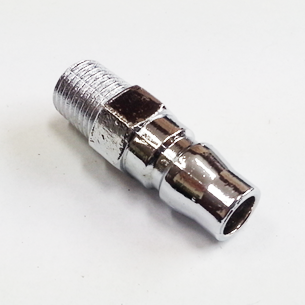
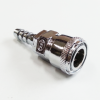
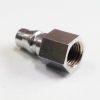
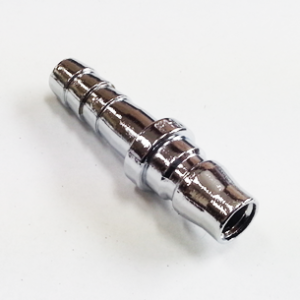
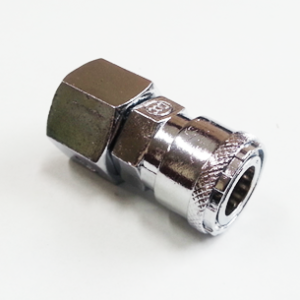
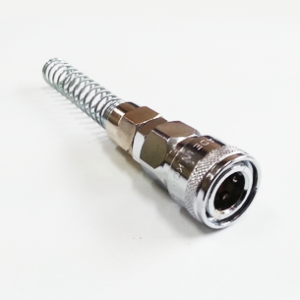
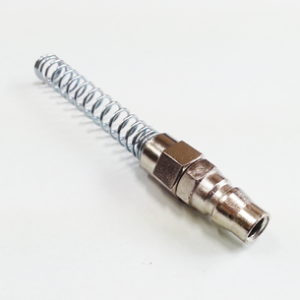
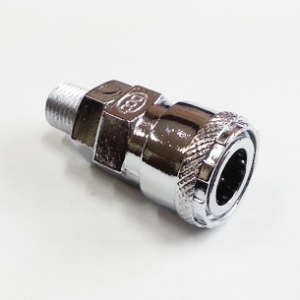
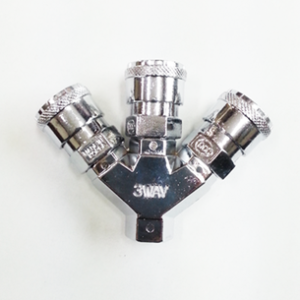
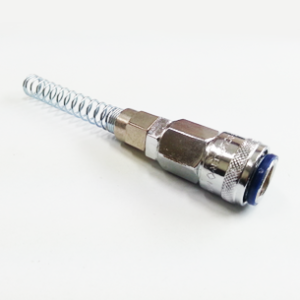
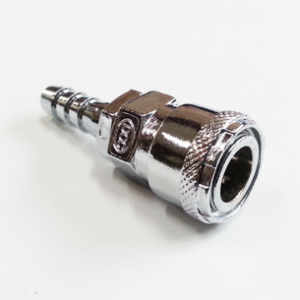
Reviews
There are no reviews yet.